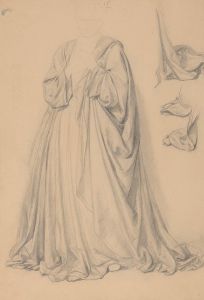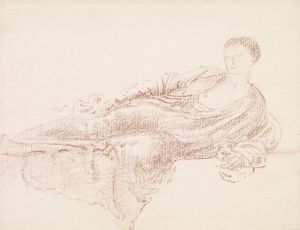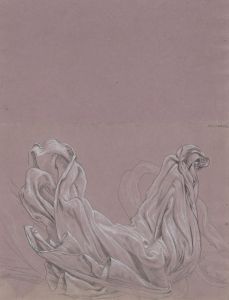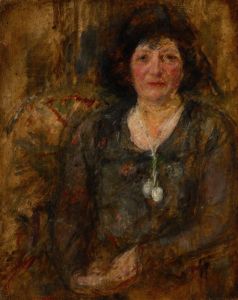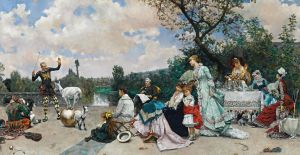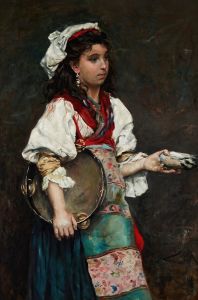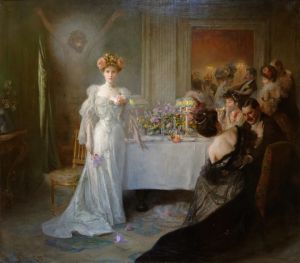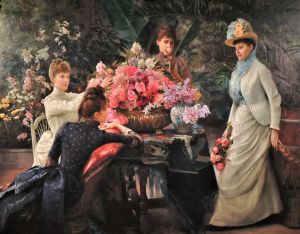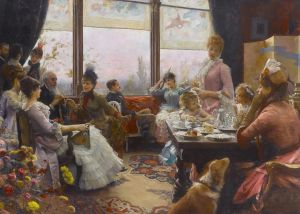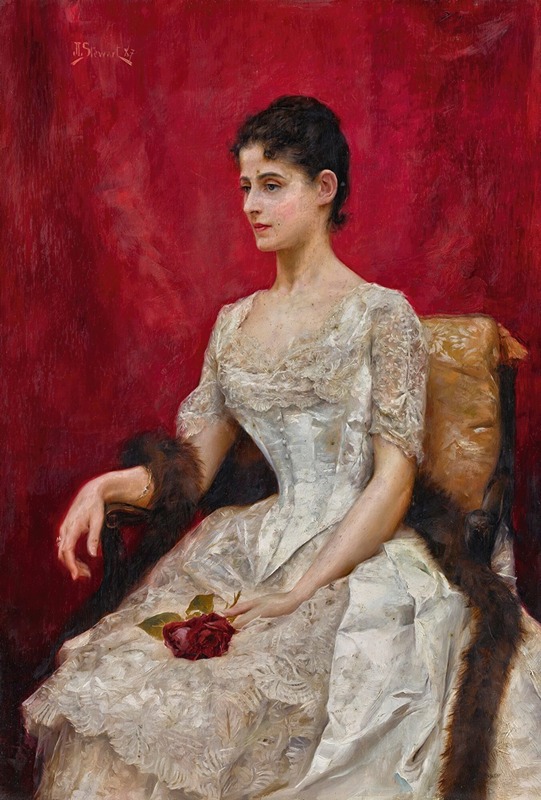
Lady in white
A hand-painted replica of Julius Leblanc Stewart’s masterpiece Lady in white, meticulously crafted by professional artists to capture the true essence of the original. Each piece is created with museum-quality canvas and rare mineral pigments, carefully painted by experienced artists with delicate brushstrokes and rich, layered colors to perfectly recreate the texture of the original artwork. Unlike machine-printed reproductions, this hand-painted version brings the painting to life, infused with the artist’s emotions and skill in every stroke. Whether for personal collection or home decoration, it instantly elevates the artistic atmosphere of any space.
Julius LeBlanc Stewart was an American artist known for his luxurious and detailed paintings, often depicting the social elite and high society of the late 19th and early 20th centuries. Born in Philadelphia in 1855, Stewart spent much of his life in Paris, where he became a prominent figure in the art world. He was particularly known for his ability to capture the opulence and elegance of the Belle Époque era.
One of Stewart's notable works is "Lady in White," a painting that exemplifies his skill in portraying the refined and sophisticated lifestyle of his subjects. Although specific details about this particular painting are limited, Stewart's body of work often features similar themes and stylistic elements that can provide context for understanding "Lady in White."
Stewart's paintings are characterized by their attention to detail, vibrant use of color, and the ability to convey the textures and materials of the clothing and surroundings of his subjects. His works often depict scenes of leisure and luxury, capturing the essence of the affluent society in which he lived and worked. The subjects in his paintings are frequently shown in elegant attire, set against richly decorated interiors or lush outdoor settings, reflecting the grandeur of the period.
"Lady in White" likely follows this tradition, showcasing Stewart's talent for rendering the delicate fabrics and intricate details of his subject's attire. The title suggests a focus on a female figure dressed in white, a common motif in art that often symbolizes purity, elegance, or social status. Stewart's ability to capture the nuances of light and shadow would have been instrumental in bringing such a composition to life, highlighting the textures and forms within the painting.
Stewart's work was well-received during his lifetime, and he exhibited regularly at the Paris Salon, one of the most prestigious art exhibitions of the time. His paintings were admired for their technical proficiency and the way they encapsulated the spirit of the era. Stewart's connections to the art world were also strengthened by his family's wealth and social standing, which allowed him to move in influential circles and gain commissions from wealthy patrons.
While "Lady in White" is just one example of Stewart's extensive oeuvre, it reflects the broader themes and techniques that define his work. His paintings remain a testament to the elegance and sophistication of the Belle Époque, offering a window into the world of the privileged classes during this period. Stewart's legacy as an artist is marked by his ability to capture the beauty and grandeur of his time, making his work a valuable part of art history.
In summary, Julius LeBlanc Stewart's "Lady in White" is a representation of his mastery in depicting the luxurious lifestyle of the late 19th century. Although specific details about the painting are scarce, it is likely to embody the elegance and attention to detail that characterize Stewart's work, making it a noteworthy piece within his artistic legacy.





